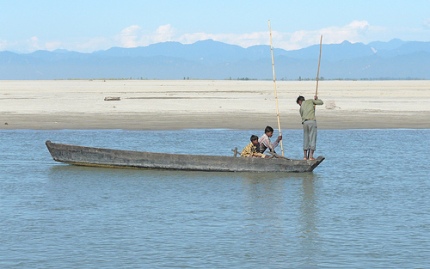A new agreement between China and India on transboundary rivers will not improve transparency and could open the floodgates for more dam building in the Himalayas

India and China’s much-publicised agreement last week claims to strengthen cooperation on shared rivers, supposedly allaying Indian fears over new dams.
Under the deal, China has also agreed to extend the flood data they provide to India on the Brahmaputra – the most controversial of the Himalayan rivers flowing between India and China – from May to October instead of June to October in the previous agreements.
From its source in Tibet, where it is known as the Yarlung Zangbo, the Brahmaputra meanders 2,900 kilometres and passes through India and Bangladesh. With devastating annual floods and potentially hazardous hydroelectricity projects in the pipeline, improved cross-border cooperation is urgently needed.
China’s plans to construct more dams on the Brahmaputra in Tibet have caused increasing alarm in India about the downstream impacts. The most contentious project is a massive 48,000-megawatt dam slated for the “great bend” in China, before the river swings round into India (over twice the size of the Three Gorges dam).
China’s repeated assurances that the projects will not reduce water flow in the Brahmaputra, as they are run-of-the-river hydropower projects not designed to hold water, have failed to quell fears.
Hopes that the new agreement will mark a turning point in relations on water may be premature. Looking at the actual language of the most recent agreement, signed last week, there is no mention of dams, river projects or India’s water rights. What’s more, it transpires that India is paying China for the hydrological data and not making it publically available afterwards, according to the South Asia Network on Dams, Rivers and People (SANDRP).
In resolving their differences, the deal could also be seen as a tacit agreement between India and China to plough ahead with their respective dam building plans in the Himalayas, regardless of the disastrous environmental consequences.
South Asia water experts voiced this very fear at a recent Third Pole workshop in Kathmandu, citing the powerful economic and political interests behind dam building in the region.
More than 400 hydroelectric schemes are planned in the region, which, if built, could together provide more than 160,000 megawatts of electricity and mean that the Himalayas become the most dammed region in the world.
